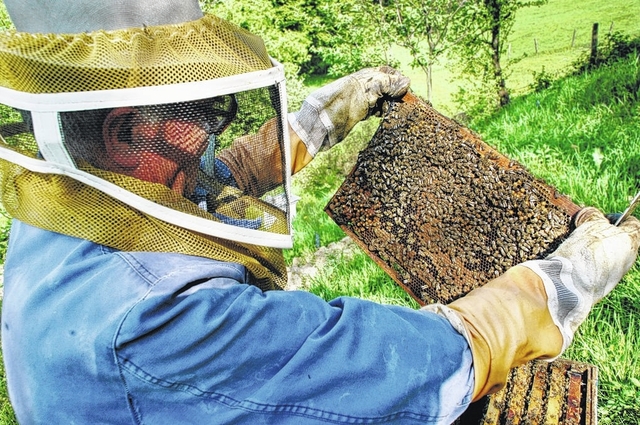With winter approaching, beekeepers should be preparing their colonies for the cold days to come. Beekeepers use many different styles of feeders such as entrance feeders, in hive division feeders, and top feeders. Beekeepers feed bees in order to get them through the winter due to the lack of nectar and pollen not being available from plants during the dormant season. Most beekeepers use a carbohydrate feed of standard sugar or high fructose corn syrup. For brood production season feeding, most beekeepers use a 1:1 ratio, whereas for overwintering hives, a 2:1 ratio is commonly used for thicker sugar water feed mixture.
During the winter we have short days, long nights, and different temperature variations. As weather relates to bees, daily temperatures are typically too cold for bees to fly. Occasionally a warm day or two will greet us and the bees will take cleansing flights.
This time of the year bees don’t consume much food at all because they are not very active. Unlike some other animals, bees don’t hibernate. When temperatures drop below 55 degrees, bees will huddle very close together in the hive. Bees can generate their own heat by snuggling up together and shivering. They fan their wings to circulate the warm air throughout the broad chamber. In strong hives, bees will gather around the cluster creating an insulation layer, and they will take turns rotated out of the outside layer in an effort to prevent any of the bees from freezing to death. When the days begin to get longer, the hive will begin preparations for the spring season. The queen has a slow start on laying eggs in the beginning, because she wants to be sure there are enough worker bees keeping the brood warm.
As a beekeeper, keep a check on your apiaries. Lift the back of the hive to estimate the weight in order to determine if the bees have enough food stores or is it limited. Most hives will be okay if they were properly fed in the fall in preparation for the winter.
When it’s too cold to be opening up hives to take a peek, beekeepers need to be preparing for the upcoming spring season. During the winter months is the time to decide how many increases you want to make for next year, how much equipment you need to order along with those package bees. Don’t forget to save time for maintenance on equipment. Your equipment may need to be assembled, painted, and tagged. Be sure to take a peek at your stored equipment to be sure Santa didn’t leave you any surprises like wax moths or any other unwanted damaging pests.
If you would like to read more information about bees and beekeeping, visit the following website. http://entomology.ces.ncsu.edu/apiculture/


